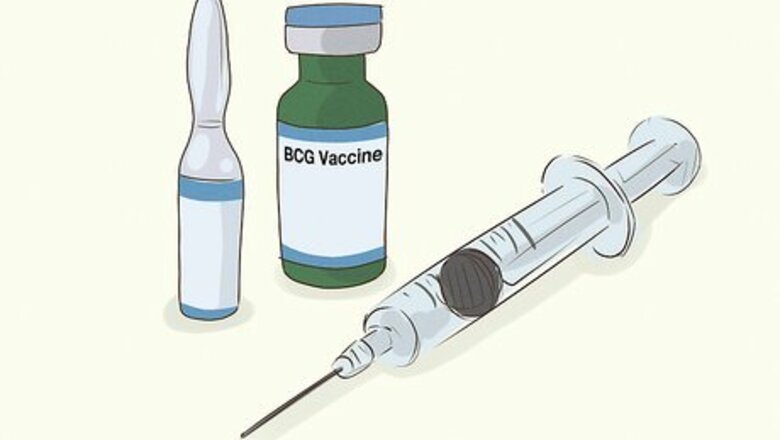
views
Getting a TST Skin Test
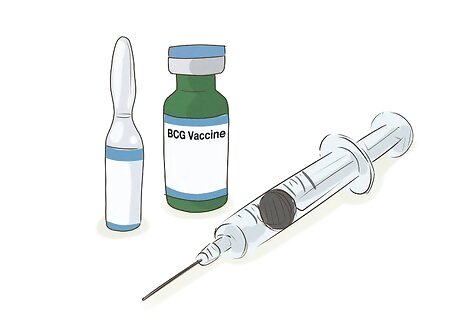
Inform your doctor if you’ve ever had the BCG vaccine. The bacillus Calmette-Guérin vaccine gives your body immunity from a TB infection. Because the vaccine introduces the TB bacteria into your body, it can result in a false positive on your skin test. Inform your doctor if you’ve had this vaccine so they can be wary of a false positive. If you have had the vaccine, your doctor will probably opt for a blood test instead, because this isn't susceptible to a false positive from the vaccine.

Receive a PPD injection on your forearm. The most common test for TB is an injection of fluid called tuberculin just under the skin in your forearm. If this fluid reacts with your body and produces a swollen bump, it indicates a positive test. Because the skin on your forearm is thin, you will feel a pinch when the fluid is injected. Try deep breathing and other relaxation techniques to overcome a fear of needles if shots make you nervous.
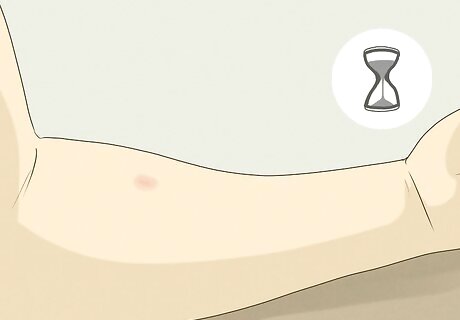
Avoid disturbing the test spot. After you get your injection, leave the spot alone until the doctor examines it again. Any kind of disturbance can impact the test results. Do not cover the area with a bandage or any lotion. Also, do not scratch the area. If the injection itches or causes discomfort, you can hold an ice cube against the area to numb it.
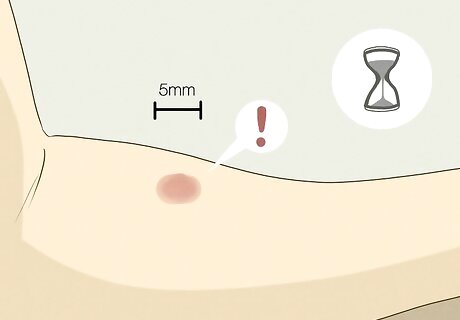
Look for swelling at the injection site. Immediately after the injection, there will be some swelling. If you have never had TB bacteria in your body, this swelling should subside within a few hours. However, if the swelling remains or grows larger, it could indicate a positive test. Generally a swollen bump at least 5 mm in diameter indicates a positive test.
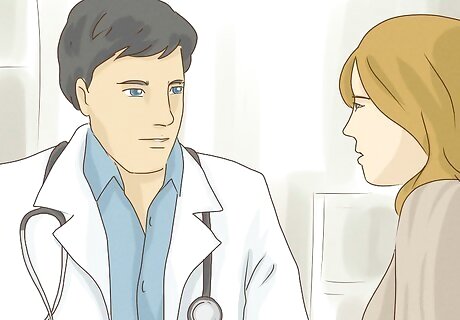
Return to the doctor 48 to 72 hours later for an assessment. It’s extremely important that you keep your appointment with your doctor 2 or 3 days after the test because only a trained professional can accurately interpret the results. If there is no indication of an infection, your doctor will declare the test negative. If there is swelling, your doctor will do more tests to see if this indicates a TB infection. The TST skin test is known for false positives, so it is not a definitive test for whether someone has a TB infection. If your test comes back positive, your doctor will ask follow-up questions to determine if this is a false positive. He will also order more tests to confirm the results.
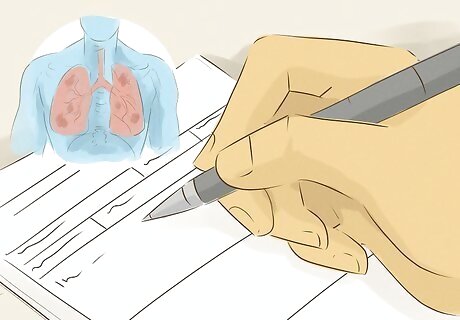
Ask your doctor for a written record if your test is positive. The TST test measures whether you’ve ever had TB bacteria in your body. That means if you have a positive skin test once, you might always have a positive skin test, even after you complete your treatment. Get a written report from your doctor indicating that you’ve completed the necessary treatments and do not have an active TB infection.
Testing Your Blood
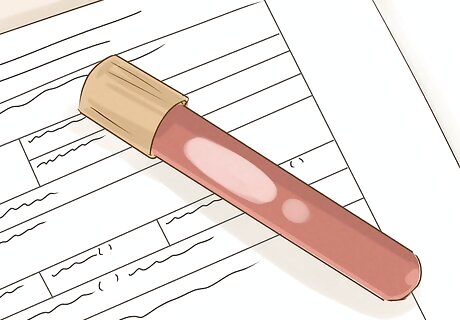
Have your doctor draw your blood. An alternative to the skin test for TB is an IGRA blood test. This measures how strongly your blood reacts to the TB bacteria in a laboratory setting to see if you’ve been infected. Start by scheduling an appointment for your doctor to draw your blood. They will then send the blood to a lab for the necessary tests. Prepare for your blood test if the thought of giving blood makes you nervous. Your doctor may send you to a lab directly for the blood test.

Wait approximately 24 hours for your results. The TB blood test should only take about a day for results to come back. Unlike the skin test, you don’t have to go back to the doctor for an assessment. Your doctor should call to give you your results.
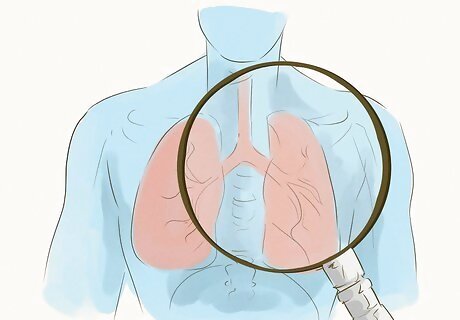
Conduct further tests if your result was positive. This blood test only measures if you’ve ever had TB bacteria in your body. It doesn’t say whether you have an active or latent infection. To determine that, your doctor will order more tests and depending on those results, start you on treatment. Commonly, your doctor will follow up a positive blood test with chest scans and a mucous sample. These will provide more answers on whether or not you have a TB infection.
Taking a Throat Culture
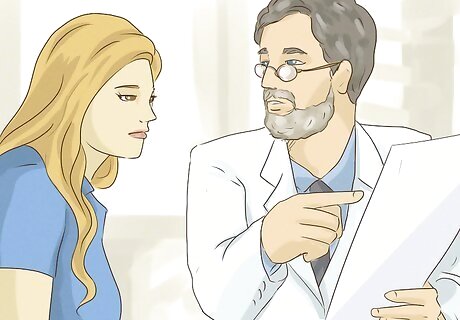
Have your doctor explain how this test works. Unlike many other medical tests, the TB throat culture test requires you to collect samples at home. The test measures if there is any TB bacteria in your sputum, the mucus you produce when coughing. You’ll have to use a testing kit and collect samples for a 3-5 day period and bring them to your doctor for testing. Follow all instructions the doctor gives you to ensure you collect the samples correctly. If at any point during the testing you’re confused or don’t know what do to, call your doctor and check right away.

Collect sputum samples in the early morning before you’ve eaten. This ensures that there is no contamination in the samples that could affect the results. Depending on the test your doctor gave you, you will have to swab the back of your throat or spit your sputum into a container. Whichever test type you use, it’s important to test the mucus in your throat. Cough a few times and bring up some mucus to get the most accurate test results.

Return the samples to your doctor. Keep the samples sterile and do not re-open the container after you’ve already sealed it. When your doctor receives the samples, they will send them off to a lab for testing. Some testing kits are mail-away, so rather than going all the way back to your doctor, you can just drop the samples in a box at the post office. Follow all the printed directions for mailing the samples to a lab.

Wait 24 hours for a rapid culture test. Sputum tests used to take a very long time, but newer lab tests and technology can do a rapid test that produces a result within 24 hours. This test is not as accurate, but will give an indication on whether or not you should start treatment for a TB infection before the throat culture comes back. If your rapid test comes back positive, your doctor probably won’t wait for the throat culture test to come back before starting your treatment. If your doctor instructs you to do so, start treatment after your rapid test.

Wait 4 weeks for a conclusive throat culture. The most accurate way to test for TB involves using your sputum samples to grow a throat culture. If TB bacteria is present in that culture, it’s a clear indication of a TB infection. This takes time, however, and the average time for these results is about 4 weeks. If your rapid test already came back positive, your doctor will probably have already started your treatment before the throat culture results come back.
Having Your Chest Scanned
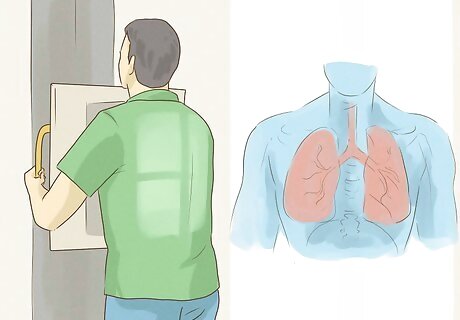
Schedule an x-ray or CT scan of your chest. If any of your TB tests come back positive, your doctor will want to do a scan of your chest to see if your lungs are damaged. Both an x-ray and a CT scan will show inflammation if you have a TB infection. The doctor will use this information to effectively treat you. It’s up to your doctor to decide which test he will give you. Both will work, but a CT scan usually shows clearer images. Your doctor may order both tests to be comprehensive.
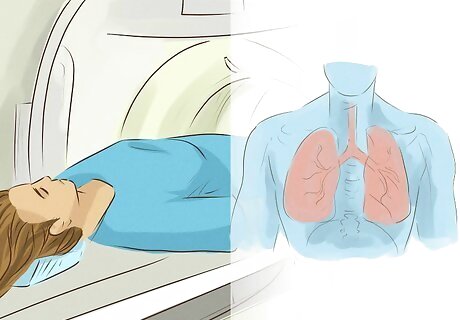
Prepare for your CT scan. Having a CT scan requires some preparation. After you’ve scheduled your test, follow all the instructions to ensure your results are accurate. Typically you are not allowed to eat before a CT scan because you have to drink contrast dye that provides an internal image of your body. The technicians may inject the dye instead of having you swallow it. Also be sure to remove any metal jewelry or watches before your scan.
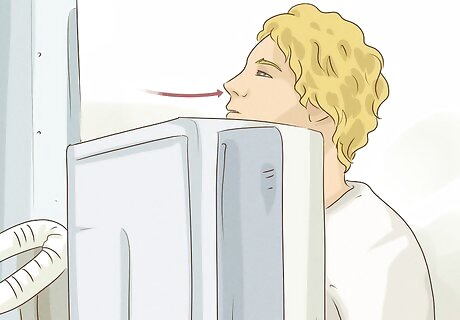
Hold your breath during the x-ray if instructed to. X-rays usually don’t require any preparation, but follow all instructions during the test. Holding your breath makes the heart and lungs appear more clearly, so you may be instructed to do this. It should only be for a few seconds because x-rays snap very quickly. Learn what to expect for your x-ray if you’re nervous about the procedure.
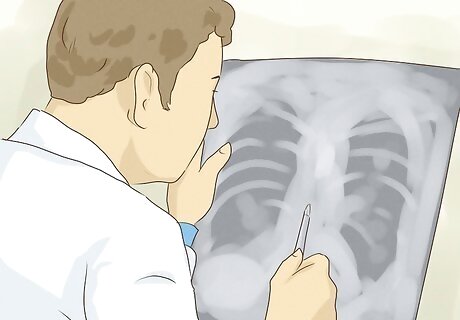
Wait for your doctor to assess the test results. Whether you have an x-ray, CT scan, or both, your doctor will have to assess the results. After this, they will decide the course of action to take. Follow your doctor’s instructions and you should be able to beat TB and get your health back.



















Comments
0 comment